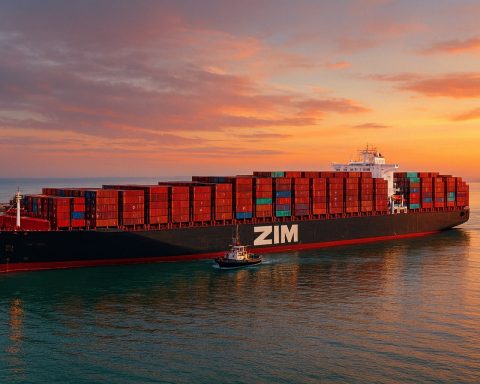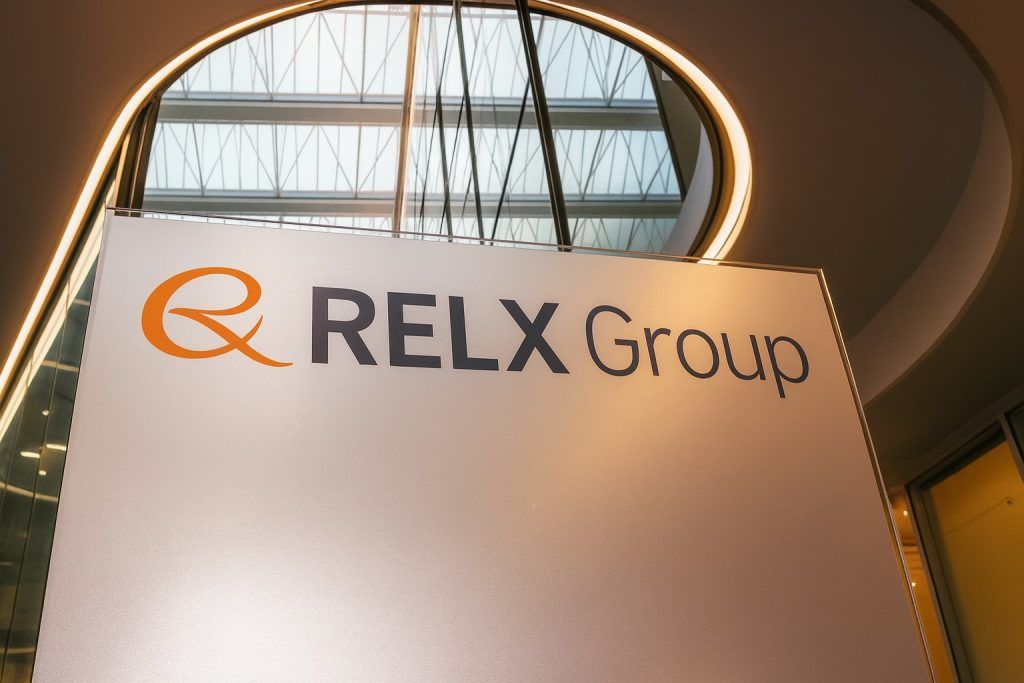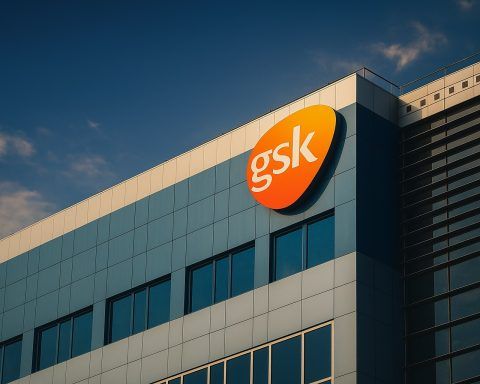BAE Systems’ share price pushed higher on Thursday, 20 November 2025, as investors digested a fresh India vehicle contract, a new space-semiconductor partnership and ongoing strength in global defence spending.
BAE Systems share price snapshot (LON: BA.) – 20 November 2025
Based on closing data from UK broker Hargreaves Lansdown, BAE Systems plc (ticker: BA.) finished Thursday’s session at around 1,765p, with a closing quote of sell 1,764.5p / buy 1,765.5p. That’s a rise of 41p, or roughly +2.4%, compared with Wednesday’s close at 1,724.5p. [1]
Key numbers for today’s session:
- Today’s close: ~1,765p
- Day change:+41p (+2.38%) [2]
- Intraday range:1,733p – 1,768.6p [3]
- Previous close (19 Nov):1,724.5p [4]
- 52-week range:1,127.5p – 2,071p [5]
- Market capitalisation: about £51.6bn [6]
- 1-year share price performance: roughly +31%; 3-year gain near +124% [7]
The wider FTSE 100 also moved higher today, gaining about 0.5–0.6% and closing just under 9,560 points, snapping a recent losing streak. [8]
Put simply: BAE Systems outperformed the index, bouncing back after a sharp slide earlier in the week and remaining not far below its record highs.
Note: All prices are end‑of‑day values for 20 November 2025 and are delayed; always check a live quote before trading.
What’s moving the BAE Systems share price today?
Today’s move comes against a busy backdrop of contract news and technology partnerships. The main headlines investors are watching are:
- An Indian Army contract for the BvS10 Sindhu all‑terrain vehicle, produced locally with BAE support. [9]
- A space‑chip collaboration with GlobalFoundries built around BAE’s new RH12™ Storefront platform. [10]
- An expanded RH12 Storefront offering, adding capabilities for radiation‑hardened integrated circuits. [11]
- A Letter of Intent with Boeing and Saab to bid T‑7 Red Hawk as the RAF’s next advanced jet trainer. [12]
All of this sits on top of a strong trading update last week confirming robust order intake and full‑year guidance on track. [13]
Let’s break those drivers down.
1. India’s BvS10 Sindhu deal highlights land-systems demand
Indian media and defence outlets report that the Indian Army has signed a contract for BvS10 “Sindhu” all‑terrain vehicles with Larsen & Toubro (L&T), which has teamed with BAE Systems on the programme. [14]
Key points from the deal:
- L&T will manufacture the BvS10 Sindhu in India at its Armoured Systems Complex in Hazira, while BAE Systems Hägglunds provides technical and design support as the original platform manufacturer. [15]
- The contract includes integrated logistics support covering deployment, maintenance and life‑cycle services – an area that tends to generate higher‑margin, recurring revenue. [16]
- The Sindhu variant is tailored for India’s extreme conditions, from high‑altitude mountains to deserts, marshland and amphibious environments, and has already passed demanding trials. [17]
- It marks the first expansion of the BvS10 into Asia, reinforcing BAE’s presence in the region and aligning with India’s “Make in India” drive through technology transfer and localised production. [18]
While financial details haven’t been disclosed, investors typically view this sort of licence‑production deal as strategically important:
- It deepens BAE’s footprint in a major growth market.
- It can open the door to follow‑on orders, upgrades and support contracts.
- It demonstrates that BAE’s legacy platforms are still winning export business in competitive tenders.
For a share that increasingly trades on its multi‑year order visibility, another high‑profile programme win helps to underpin confidence in future cash flows.
2. Space-semiconductor push: GlobalFoundries partnership and RH12 Storefront
The other big theme around BAE today is space electronics – a smaller but potentially high‑margin part of the business that investors are watching closely.
GlobalFoundries collaboration
On 19–20 November, GlobalFoundries (NASDAQ: GFS) and BAE Systems announced a collaboration in which BAE will use GF’s 12LP FinFET semiconductor technology to build radiation‑hardened chips for space applications. [19]
According to the joint statements:
- Chips will be manufactured at GlobalFoundries’ Malta, New York fab, using its 12LP FinFET platform. [20]
- BAE will integrate this process into its RH12™ Storefront, a “turnkey” environment for customers to design custom radiation‑hardened integrated circuits for space missions. [21]
- The platform aims to offer high performance, secure connectivity and power efficiency for demanding space avionics and telecoms payloads. [22]
This is not a mega‑contract in the way that a Typhoon or submarine order is, but it matters for three reasons:
- It broadens BAE’s exposure to space and microelectronics, areas with strong structural growth.
- It leverages BAE’s radiation‑hardening know‑how – a competitive niche that is hard to replicate. [23]
- It strengthens ties with a major US foundry, potentially supporting US government and allied programmes that require trusted domestic manufacturing. [24]
RH12 Storefront gets new capabilities
Alongside the GlobalFoundries news, BAE has also expanded the capabilities of its RH12 Storefront, a 12‑nanometre radiation‑hardened IC development platform. [25]
The latest updates include:
- A broader library of IP cores, from basic logic through to complex processing and interface functions, enabling customers to design their own 12nm system‑on‑chip devices more quickly. [26]
- Emphasis on low‑power, high‑performance transistors designed for power‑constrained space missions. [27]
- Continued deployment of BAE’s radiation‑hardening and reliability techniques, along with IP licensed from partners like Cadence and Rambus. [28]
Work on RH12 is centred at BAE’s Manassas, Virginia site, a long‑standing “trusted source” for US government microelectronics. [29]
For investors, the RH12 announcements signal that BAE is moving further up the value chain in space electronics – from selling individual components to offering a full design and manufacturing ecosystem, which typically commands higher margins and deeper customer lock‑in.
3. BAE, Boeing and Saab: lining up the RAF’s next jet trainer
Closer to home, BAE Systems has teamed up with Boeing and Saab to bid for the UK Royal Air Force’s next advanced jet trainer – a programme that will eventually replace the Hawk T1 used by the Red Arrows. [30]
Reporting from Lancashire Business View and industry outlets highlights that: [31]
- The three companies have signed a Letter of Intent to offer a UK‑assembled version of the Boeing–Saab T‑7 Red Hawk.
- If selected, BAE Systems would lead UK activity, which could benefit its major aerospace sites at Warton and Samlesbury in Lancashire. [32]
- The partners plan to deliver an integrated live and synthetic training system, not just the airframe, and say they will seek to maximise UK supply‑chain content. [33]
This is not yet a contract, and there will be stiff competition from rival trainers like Leonardo’s M‑346 and Korea’s T‑50. [34]
However, even a credible bid:
- Reinforces BAE’s role as the RAF’s long‑term training and fast‑jet partner.
- Keeps its UK air‑sector factories busy beyond existing Typhoon and Tempest‑related work.
- Supports the investment case for BAE as a multi‑domain defence prime, spanning air, land, maritime and now space electronics.
4. Strong trading update still underpins the 2025 story
Today’s news flow comes only a week after BAE reiterated its upgraded full‑year guidance in a brief trading statement on 12 November.
According to that update and subsequent analyst commentary: [35]
- Year‑to‑date orders have already exceeded £27bn, with more expected before year‑end.
- Management continues to expect sales to grow 8–10% and underlying operating profit 9–11% this year.
- Free cash flow is guided at more than £1.1bn, versus a consensus closer to £1.5bn. [36]
- Around £1.5bn is earmarked for shareholder returns in 2025, via dividends and buybacks. [37]
- The order book stands at around £75bn, giving multi‑year revenue visibility across long‑cycle platforms such as submarines, combat aircraft and naval ships. [38]
Reuters also noted that demand is being supported by new orders for Typhoon fighter jets from Turkey and Type 26 frigates for Norway, and that BAE sees only limited impact so far from uncertainty around the US government budget. [39]
In market terms, BAE has already been a standout:
- As of mid‑November, its shares were up about 57% year‑to‑date, far ahead of the FTSE 100’s ~21% gain in 2025. [40]
Today’s bounce simply extends that outperformance, showing that investors are still willing to pay up for long‑term defence exposure even after a strong run.
5. Valuation: BAE no longer looks “cheap”
With the share price back above 1,700p, BAE Systems is trading on elevated valuation multiples compared with its own history.
Data from Hargreaves Lansdown and LSEG suggest: [41]
- A trailing P/E ratio around 25x earnings based on the latest reported year. [42]
- A forward P/E near 22x for the next 12 months, versus a 10‑year average closer to 14x. [43]
- A current dividend yield of roughly 1.9%, with a prospective yield around 2.2%, below the 10‑year average yield of about 3.8% as the share price has rerated. [44]
In plain English: the market is now paying a premium for BAE’s earnings, cash flows and order book. That premium can be justified if:
- Defence spending continues to trend higher across NATO and key export markets. [45]
- BAE executes well on major programmes (submarines, frigates, Typhoon, F‑35, munitions and space electronics).
- New opportunities – such as the T‑7 trainer bid and RH12‑driven space contracts – convert into sizable, profitable work.
But it also means that disappointments may be punished more harshly, because there is less valuation “cushion” than a few years ago.
6. Risks and headwinds investors are monitoring
Even on a positive day like today, there are risks in the background that could affect the share price over time.
Industrial relations in Lancashire
Unite the union is currently running a series of strike actions at BAE’s Warton and Samlesbury plants, involving around 400 professional and manufacturing staff protesting a pay offer they consider a real‑terms cut. [46]
- The first walkout began on 5 November and was due to run until 25 November, with a second phase scheduled from 16 November to 17 December. [47]
- Unite has warned that sustained industrial action could “bring Warton and Samlesbury to a standstill”, while BAE insists its offer is fair and maintains that it must remain competitive and affordable for customers. [48]
So far there is no clear sign that the strikes have materially hit guidance, but investors will be alert to any indication that production schedules or delivery milestones might slip.
Execution and cost risk on long-cycle programmes
Hargreaves Lansdown’s research note highlights that BAE’s profitability depends heavily on its ability to estimate long‑term contract costs accurately. Supply‑chain constraints and labour availability remain key “trip hazards”. [49]
Given BAE’s large exposure to US and UK defence budgets, political wrangling over spending – or any prolonged government shutdown in the US – could also affect timing of cash receipts, even if underlying demand remains strong. [50]
7. What today’s move could mean for BAE Systems investors
Putting it all together, today’s 2–3% rise in the BAE Systems share price reflects a combination of:
- Solid macro backdrop: defence and “safe‑haven” stocks remain in favour, while wider equity markets are buoyed by strong US tech earnings and easing macro fears. [51]
- Fresh contract momentum: the BvS10 Sindhu deal in India underlines export demand for BAE’s land systems and aligns it with India’s long‑term modernisation agenda. [52]
- Strategic technology moves: the GlobalFoundries partnership and RH12 Storefront expansion show BAE pushing deeper into space semiconductors, potentially opening high‑margin revenue streams. [53]
- Air‑sector pipeline: the T‑7 Red Hawk trainer bid, while still competitive, keeps BAE firmly in the conversation for the RAF’s next major training platform. [54]
- Reaffirmed fundamentals: last week’s trading update confirmed that guidance remains on track, orders are strong and the company expects to generate significant free cash flow and capital returns in 2025. [55]
For existing shareholders, the story remains one of a quality defence prime with:
- A huge order book,
- Strong US and export exposure, and
- Growing optionality in areas like space electronics and advanced training.
The trade‑off is valuation: after such a strong three‑year run, the shares now price in a generous amount of good news, leaving less room for error.
Final word
BAE Systems’ share price on 20 November 2025 shows that the market still believes in the long‑term defence super‑cycle – and in BAE’s ability to capture a disproportionate share of that spending.
Whether that makes the stock a buy, hold or sell will depend on your own risk tolerance, time horizon and view on defence budgets. This article is for information only and does not constitute investment advice. If you’re unsure what’s right for you, consider speaking to a regulated financial adviser.
References
1. www.hl.co.uk, 2. www.hl.co.uk, 3. www.hl.co.uk, 4. www.hl.co.uk, 5. www.hl.co.uk, 6. www.hl.co.uk, 7. www.hl.co.uk, 8. www.investing.com, 9. www.hindustantimes.com, 10. gf.com, 11. www.adsadvance.co.uk, 12. www.lancashirebusinessview.co.uk, 13. www.hl.co.uk, 14. www.hindustantimes.com, 15. www.hindustantimes.com, 16. www.hindustantimes.com, 17. www.hindustantimes.com, 18. forceindia.net, 19. gf.com, 20. gf.com, 21. gf.com, 22. gf.com, 23. www.adsadvance.co.uk, 24. gf.com, 25. www.adsadvance.co.uk, 26. www.adsadvance.co.uk, 27. www.adsadvance.co.uk, 28. www.adsadvance.co.uk, 29. www.adsadvance.co.uk, 30. www.lancashirebusinessview.co.uk, 31. www.lancashirebusinessview.co.uk, 32. www.lancashirebusinessview.co.uk, 33. www.lancashirebusinessview.co.uk, 34. www.lancashirebusinessview.co.uk, 35. www.hl.co.uk, 36. www.hl.co.uk, 37. www.hl.co.uk, 38. www.hl.co.uk, 39. www.reuters.com, 40. www.reuters.com, 41. www.hl.co.uk, 42. www.hl.co.uk, 43. www.hl.co.uk, 44. www.hl.co.uk, 45. www.hl.co.uk, 46. www.lancashirebusinessview.co.uk, 47. www.lancashirebusinessview.co.uk, 48. www.lancashirebusinessview.co.uk, 49. www.hl.co.uk, 50. www.reuters.com, 51. www.theguardian.com, 52. www.hindustantimes.com, 53. gf.com, 54. www.lancashirebusinessview.co.uk, 55. www.hl.co.uk










